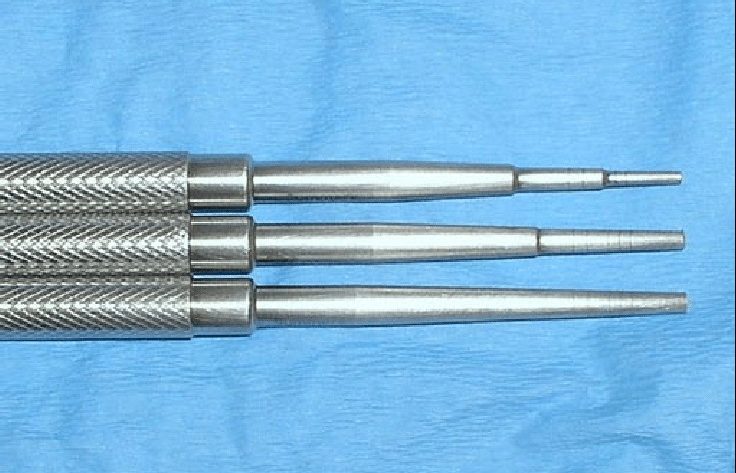Osteotomes are bone-cutting instruments commonly reused in orthopedic surgical procedures. Despite cleaning and sterilization between uses, visual inspection often fails to identify degradation in osteotome blade condition.
These bi-beveled instruments have two cutting surfaces in various shapes and sizes. They can be used to expand bone, change the consistency of medullary bone, or up-fracture the sinus floor during a ridge-crest approach sinus lift procedure.
Convex Tip
Osteotomes are a useful adjunctive instrument to enhance implant placement. They allow the clinician to manipulate existing bone, expand narrow ridges, and elevate delicate sinus membranes without creating heat, which can damage soft tissue.
A convex-tipped osteotome will not only expand the crystal floor of the site but also create a bolus of bone that is pushed ahead of the instrument, buffering the trauma to the Schneiderian membrane and limiting the potential for the membrane to tear. This type of osteotomy will also increase the initial implant stability.
An SEM (x500) evaluation of the three osteotomes after the completion of four bone-cutting cycles demonstrated that the as-supplied osteotome experienced a significant decline in its blade sharpness, with both the electroless nickel and TiN PVD-coated osteotomes experiencing superior wear resistance. The as-supplied osteotome showed considerable mechanical damage to the blade surface and deep scratching along the face of the blade compared with the coated samples.
Concave Tip
Osteotomes are two-sided, beveled surgical instruments used in orthopedic procedures to cut bone. They come in a variety of patterns and handle shapes.
During implant placement, osteotomes create space for osteogenesis, expand the apical floor of the sinus, compact bone trabeculae for improved density and initial implant primary stability, and deform bones such as the facial cortex in atrophic edentulous sites. They can also assist with positioning an abutment and provide a surgeon with a tactile sense of bone quality.
When using a concave-tip osteotome, it is vital to press the instrument against the bone and mallet only when there is a slight resistance, as excessive force could cause damage to the Schneiderian membrane or splintering of the sinus floor. Tapping the osteotome apically is also recommended only to avoid perforating the nerve bundle.
Flat Tip
Osteotomes are surgical instruments that can be effectively used to enhance the placement of dental implants. Generally wedge-shaped, osteotomes have a varied steepness of taper and can be designed to compress, cut, or deform bone. They are double-beveled (as opposed to single-beveled chisels) and must be tapped with a mallet to be effective. They are available in various shapes and sizes, including flat blades for ridge expansion and pointed tips for creating space in less dense bone.
While osteotomes are commonly reused in clinical procedures, it is still being determined how effectively surgeons can qualitatively assess the condition of the cutting edge of an individual tool. Despite routine cleaning and visual inspection between uses, the cutting edges of hospital-maintained osteotomes have been found to become duller over time [3]. This study investigated whether hard surface coatings could improve osteotome edge retention.
Round Tip
Osteotomes are used to cut, deform, or compress bone, allowing dental implants to be placed. They can prepare a ridge for a sinus lift, expand a bone graft site, or compress a dense, bony ridge.
This pilot study investigated the performance of three osteotomes, comparing their performance to qualitative visual assessment, depth penetration testing, which quantified change in blade sharpness index (BSI), and scanning electron microscopy (SEM). BSI evaluation demonstrated that after four bone-cutting cycles, the as-supplied osteotome had lost 50% of its initial BSI. In contrast, the electroless nickel and TiN PVD-coated osteotomes had only 10% and 35% loss of BSI, respectively.
These findings suggest that in-field methods of assessing osteotome blade sharpness before use must be revised, with even professional sharpening failing to restore the original bite. Further investigation should be conducted using a larger sample size to evaluate whether coating osteotomes with wear-resistant materials improves their ability to retain their initial sharpness during use.




